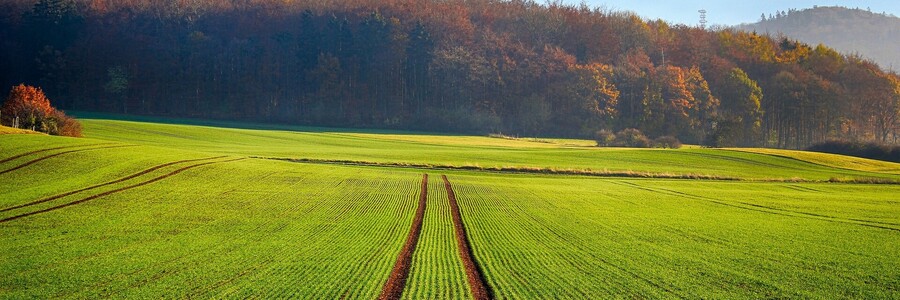Biodiversity in retreat
Numerous studies in recent years show: Biodiversity in meadows and pastures has declined sharply in recent decades. Measures to halt this loss have so far mostly focused on species that live above ground, such as birds and bees. But the soil of meadows and pastures is also teeming with life. These organisms are at least as diverse as the above-ground fauna and immensely important for soil fertility, carbon storage and a range of other ecosystem services.
The study
The study by researchers from the Senckenberg Biodiversity and Climate Research Centre Frankfurt analyses how species-rich 150 plots of meadows and pastures are, both above and below ground, and what role intensive land use plays in this. The study areas were located in the Schorfheide-Chorin, on the Swabian Alb and in the Hainich National Park. For the study, the species diversity along the entire food chain was related and considered, and it was also investigated how intensively the plots are used for agriculture and what the landscape looks like within a two-kilometre radius around the plots.
The findings
The research led to new insights into how soil biodiversity is affected: for example, soil biodiversity in agricultural meadows and pastures is highest when they are surrounded by forest with old trees. In contrast, the two main pillars of measures to promote agrobiodiversity - extensive land use and a diverse environment - have little influence on the diversity of sub-irid organisms. The current nature conservation pratices in the agricultural landscape, such as a reduced use of fertilisers or the planting of flower strips, thus have a positive influence on above-ground species such as bees or birds, but probably hardly benefit life in the soil. This is because below- and above-irid biodiversity are subject to different influences.
How intensively plots are fertilised, grazed or mown has little influence on the species richness in the soil of the plots. Surprisingly, some groups of soil animals, such as fungi and amoebae, even benefit from intensive land use. According to the study, the species diversity of soil organisms thus depends less on what happens on the plot itself, but rather on the nature of the wider environment: this is higher the more forest area there is within a distance of up to two kilometres and the longer this forest has existed. Thus, forests provide a stable habitat for soil organisms and a place of refuge. From there, animals and fungi can recolonise the soil of meadows and pastures after agricultural practices have been carried out.
Dynamic agroforestry
The study shown once again highlights the immense importance of agroforestry systems. For example, the cultivation of tree rows on fields leads to a variety of positive effects such as increased resilience to drought and heavy rainfall, the regeneration of degenerated soils and the build-up of humus, thus ensuring an increase in soil biodiversity. The improvement of soils and the preservation of biodiversity in agriculture can therefore be achieved first and foremost with agroforestry systems.
Learn more about dynamic agroforestry and our donation project

